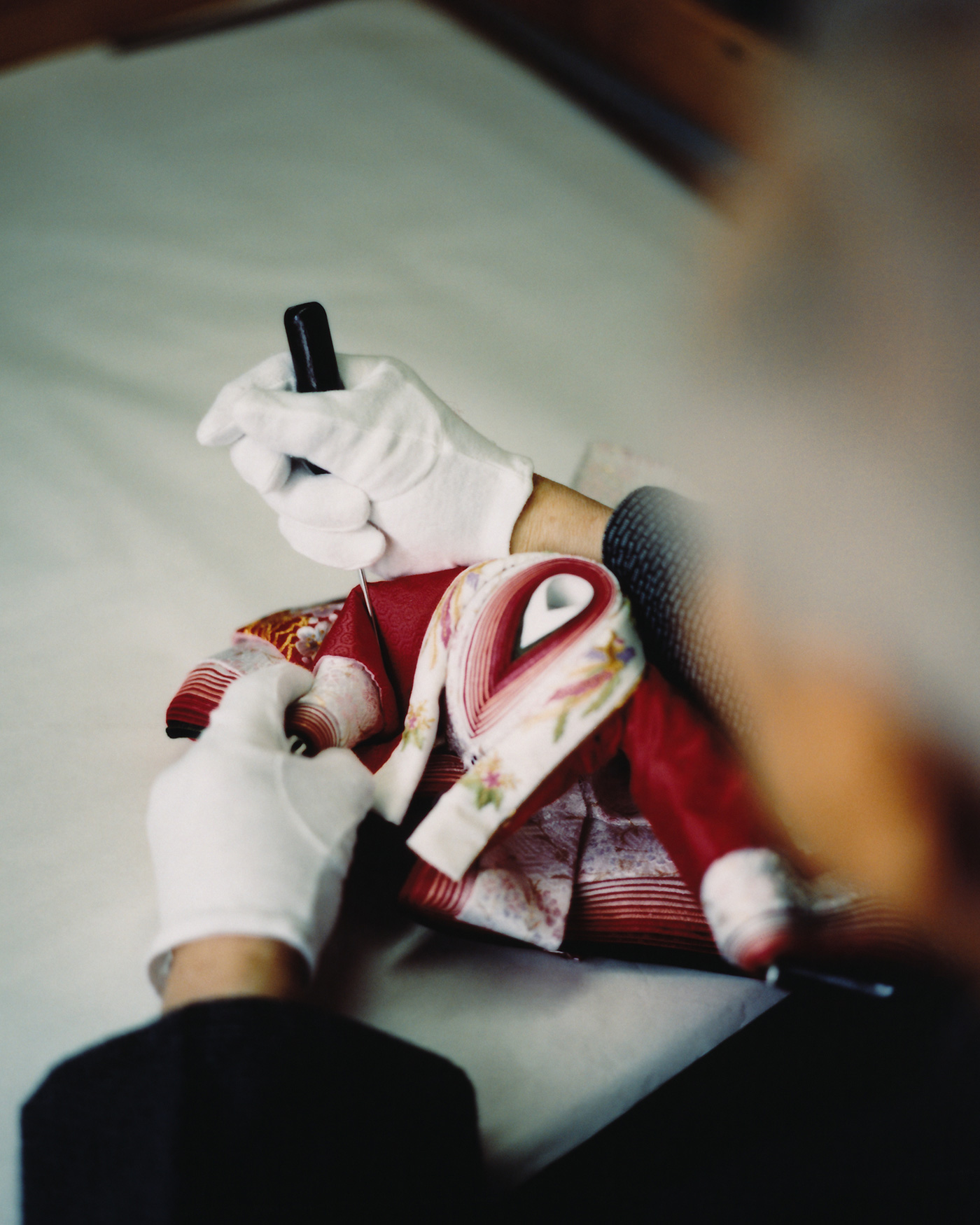Seal Carving
Sumire Dou is a sister brand of Furuhashi San’ei Dou, a hand-carved seal specialty shop founded in 1953. The brand’s mission is to spread the shop’s seals, beautifully imbued with a dynamism made possible by hand carving. We spoke with Aya Masuda, the daughter of second-generation seal carver and Sumire Dou founder Hiroshi Furuhashi.

Sumire Dou is a sister brand of Furuhashi San’ei Dou, a seal specialty shop founded in 1953. What led to the establishment of Sumire Dou?
There were two things. I was born into a family of seal carvers. I looked upon my father’s work matter-of-factly, with seals such an everyday thing for me that I wasn’t aware of the value of hand-carved seals as a traditional handicraft, despite their being a wonderful part of Japan’s culture.
I earlier worked in the wedding industry. I grew up watching the handiwork of my father and grandfather and so had an admiration for artisans, but I was also fascinated by haute couture dresses from Milan. I started that work about 15 or 20 years ago when imported dresses hadn’t yet come to Japan, so my job was connecting Japanese people with the dresses. I think that this experience gave me an eye for aesthetics. It was because I’d learned about beautiful culture from overseas that I became aware of the beauty and delicate work in Japan’s traditional handicrafts. That’s one thing that led me to this work.
Like other traditional handicrafts, the seal industry faces challenges that include the passing down of skills and the shortage of successors. Realizing that people who will convey the craft are necessary for it to survive amid the emergence of cheap, mass-produced products was the second thing that led me to this work. So, I began Sumire Dou as a mail-order shop handling seal products that I developed myself.

Was it from your experience handling dresses from overseas in a different industry that you became aware of the value and the challenges inherent in Japanese handicrafts?
I rediscovered the value of hanko personal seals and got motivated when a friend of mine had a child. When I told her that I wanted to send her a gift as congratulations, she said, “I want a hanko seal for the baby.” I asked my father to carve one for me, and my friend was really moved by the gift. I was taken aback when she thanked me for the thoughtful carving of the name, a name she and her husband had put so much effort into choosing. A seal is a practical and convenient thing, but as someone who’d worked in the wedding industry, I was surprised that such a modest thing would get such appreciation as a gift for the birth of a baby. A hanko seal is something that takes a person’s precious name, a thing that has no shape, and gives it a form. I came to the realization that the seal is a work of art which, inside a small circle, more beautifully and compellingly confers design to a name that is imbued with the thoughts and the hopes of the parents.
From that experience, I decided to undertake development, starting with cases suitable as gifts, instead of ordinary hanko seals. This led to the original yamazakura wooden cases and vintage tsuge hanko sets, and I started the mail order business from the Sumire Dou website.


So carefully hand-carving a child’s name, filled with the wishes of the parents, is where you found value. Could you tell us what characterizes the skills of seal carving?
All of the products sold at Sumire Dou are hand-carved by second-generation seal carvers at Furuhashi San’ei Dou.
Let me briefly talk about the history of seals. Going back about 6,000 years, the origin of modern seals is said to have been the creation of stamps around 3000 to 4000 BC. The beginning of seals in Japan happened with the gifting of a seal to Japan during the Han dynasty in China, supposedly in the year 57 AD. Seals were originally used by government officials, nobility, and warlords as proof of identity. They’re said to have become available to the general public during the Edo period. The roots of modern seal carving lie in the appearance of seal carvers who came about to meet the needs of merchants requiring seals for commerce. The city of Nagoya in Aichi Prefecture is home to Shachihata, a company famous for developing seals that need no ink pad for stamping. Rubber seals were also invented in Aichi. Nagoya has been a manufacturing city from long ago, so it must have been the birthplace of a lot of ideas.







